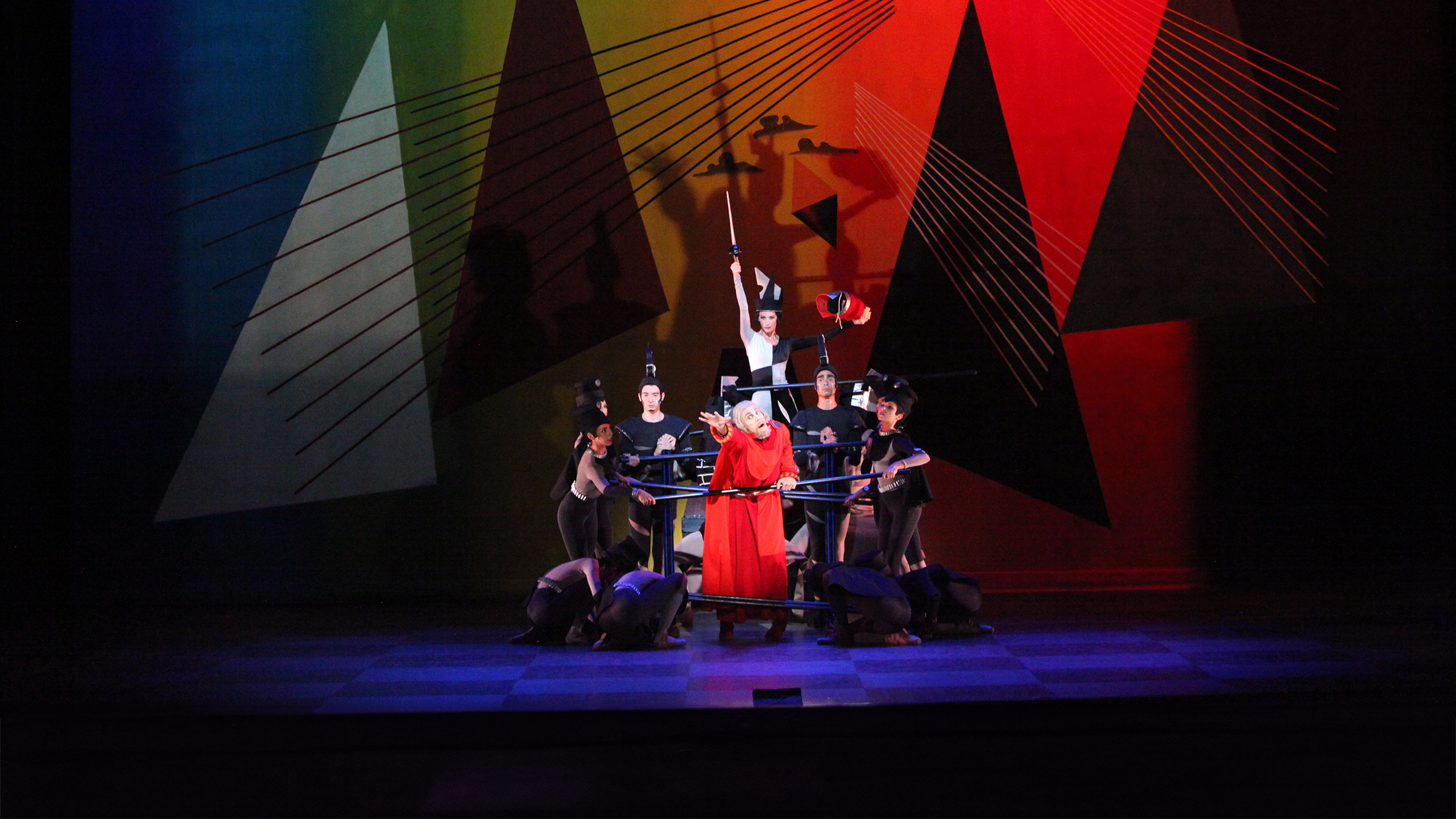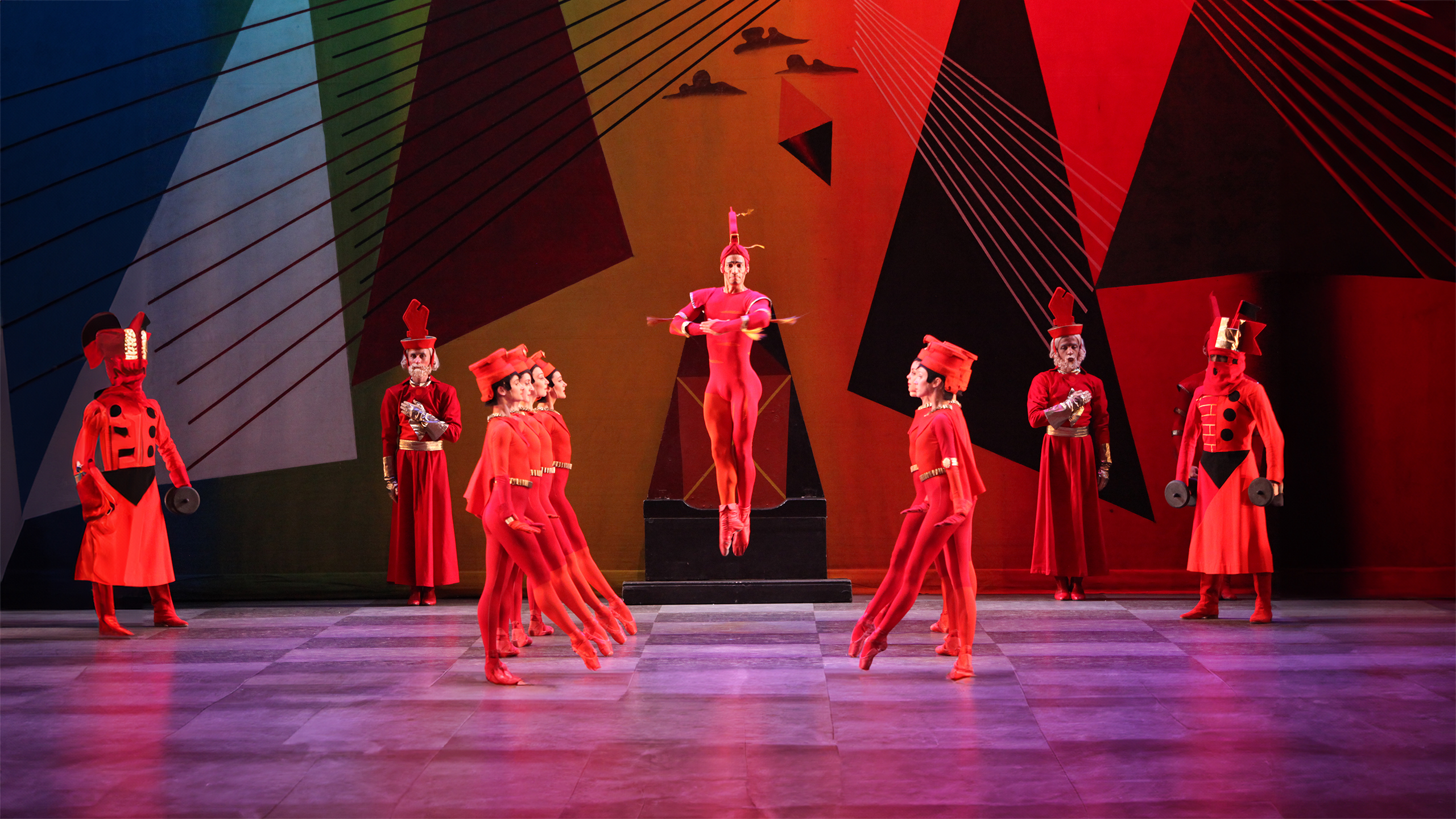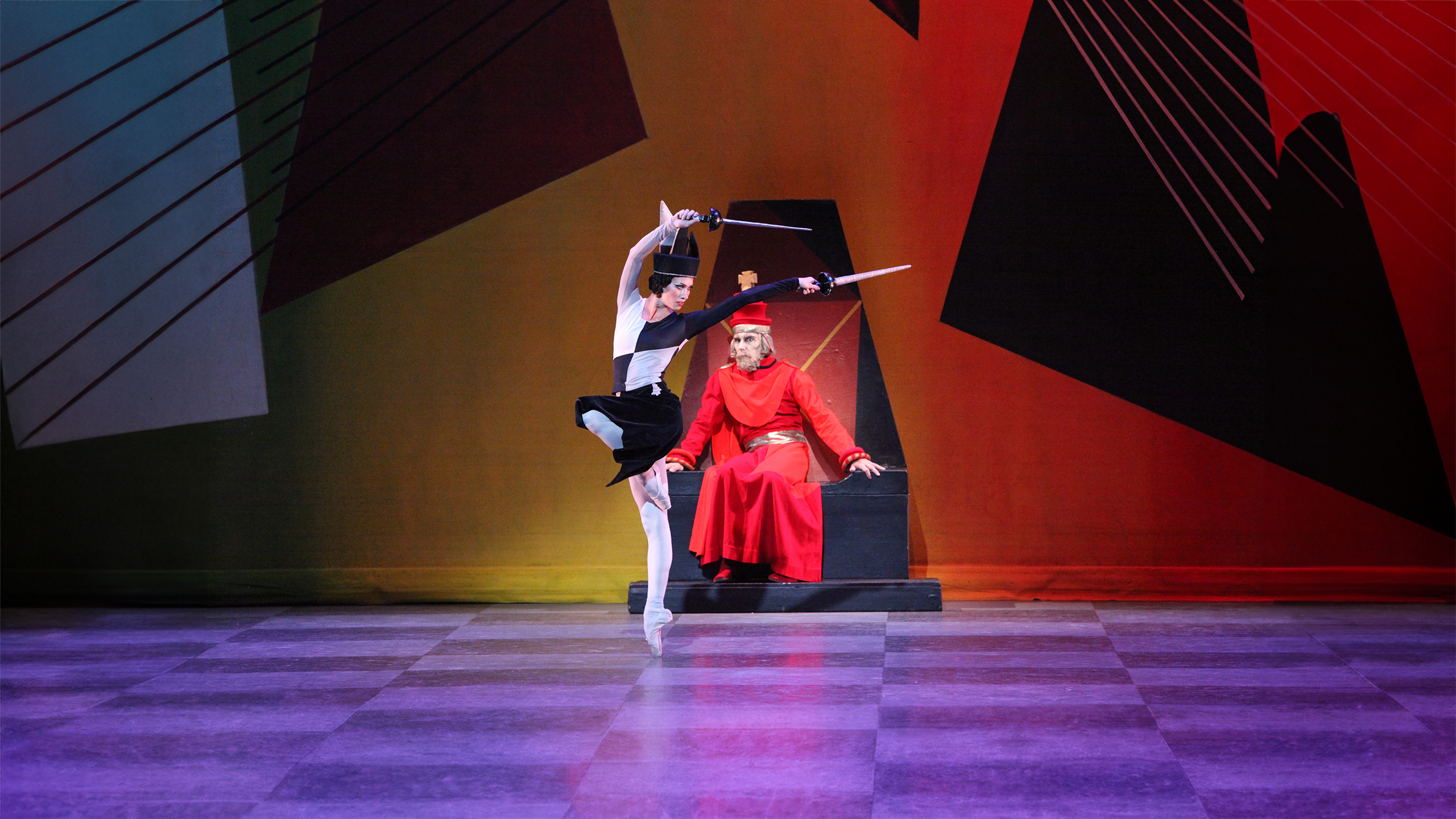Checkmate
Dame Ninette de Valois
Premiered June 15, 1937, by The Vic-Wells Ballet
Checkmate
Ninette de Valois’ reputation as the guiding genius and founder of The Royal Ballet should not lead us to overlook her choreographic achievements with a series of distinctive and dramatic ballets in the 1930s, drawing on English sources and collaborators: Job (1931), The Haunted Ballroom (1934), The Rake’s Progress (1935) and Checkmate (1937).
Checkmate is both a classic and unmistakably a period piece, with its Expressionist influences and distinctive art deco designs by the leading commercial artist of the day. The composer also devised the libretto, while the ballet draws, like other de Valois works (Job or The Rake’s Progress), on English elements—in this case, England’s folkloric Morris and Sword Dance traditions. The ballet is unusual in de Valois’ work in that its leading role goes not to a man but to a woman, The Black Queen, originally and memorably danced by June Brae.
The prologue establishes a contest, a chess game between Love and Death, before the stylized chess board sees a mustering of the Red pieces (Love), with the Pawns (light-hearted pages) followed by the Red Knights (powerful and chivalric fighters), challenged by the equally potent Black Knights and the menacing Black Queen herself, who uses her allure to captivate and disempower the Red Knight.
The dignified Red Bishops and threateningly robotic Red Castles enter, then the elderly, tottering Red King, with his lovingly ineffectual Red Queen, before the chess game starts in earnest with the Black pieces’ withering assault leading the “check” of the Red King, whose Knights and Queen defend him in vain. The Red Knight jumps to his King’s defense and fights the Black Queen to her knees, but, torn between loyalty and love, fatally hesitates and is ruthlessly dispatched by the triumphant Black Queen, who proceeds to the kill.
Death has conquered Love, as the Black Queen stabs the Red King in “checkmate.”


